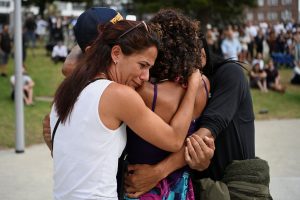The Hellenic Statistical Authority (ELSTAT) announced the results of its 2023 Survey on Income and Living Conditions (EU – SILC) and revealed that income inequality nudged higher when compared to 2022 and material and social deprivation was just a bit lower.
The EU-SILC is conducted in all EU-Member States and aims at examining the living conditions of households in relation to their income at both national and European levels. The Survey is the basic source for comparable statistics on income distribution and social exclusion at European level.
Income Inequality 2023
According to ELSTAT, the share of the income of the wealthiest 20% of the population is 5.28 times higher than the share of the income of the poorest 20% of the population. This is a bit higher than in 2019, where income inequality was 5.11 times. But, it is still much less than in 2016 where the gap was 6.55 times.

Using the same method of calculation and looking at a European level, one sees that the lowest level of income inequality was posted in Slovenia, at 3.34 times. Meanwhile the highest difference was noted in Bulgaria at 6.63 times.
ELSTAT explains that the total disposable income of the household is considered the total net income (income minus taxes and social contributions) received by all household members. The survey includes the following as income: work, property, social transfers and pensions, transfers from other households, income from use of a company car.
And while the survey includes all private households of all socio-economic levels, it excludes: institutional households (ie. boarding houses, elderly homes, hospitals, prisons, rehabilitation centers, camps, etc.) and households with foreigners serving in diplomatic missions.
Material and Social Deprivation
The EU-SILC also takes a look at what it calls “material and social deprivation” and found that 13.5% of the population lacks at least 7 out of the 13 goods and services which are considered necessary.
The portion of the population that lacks at least 4 out of 9 necessary goods and services came in at 16.6%. Slightly more children under the age of 17 in 2023 were materially and socially deprived for a total of 15.6% of children. Meanwhile, the situation improved for persons between 18-64 with deprivation falling 7.5% compared to 2022. Unfortunately, deprivation for persons over 65 jumped 13.9% to 12.3% of the population.
The report also reveals that in 2023 19.2% of households were unable to keep their houses warm or cool enough, while 26.9% of those surveyed lived in crowded households.



